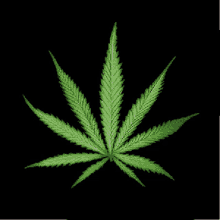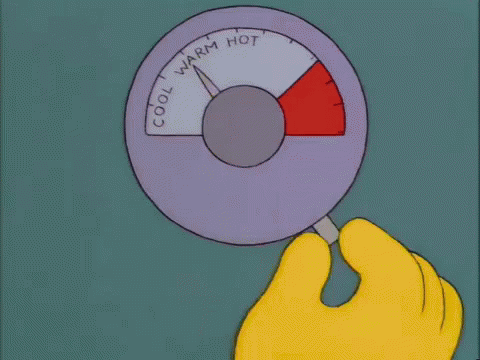You already know about climate change and the enormous amounts of greenhouse gases heating up our planet. I’m here to tell you about a 30,000 year old solution that we have at our fingertips. One that’s typically greeted with a smirk, a non-believing snarky witty comment, or even a skeptical eye roll ...
Hemp.
An ancient crop from the Cannabis species. Yes, that one.
So what can the highly prestigious serious world of climate action benefit from a plant that's cousin can get you high?
How can a plant that’s been labeled a narcotic for more than 40 years help tackle plastic pollution?
How can a plant forbidden from farms for decades save our forests?
Of everything green and natural, hemp is probably the most misunderstood plant. So misunderstood, that even poison oak gets a better treatment than it does.
Despite centuries’ worth of service to humanity, hemp has been all but relegated to the background, substituted for cheaper alternatives, branded with a bad tag, and for the better part of forty plus years, has all but been forgotten. A lot has been said about hemp, and there is so much to talk about, but not enough in the way of its environmental superpowers - hence the usual confusion that trails it.

Let’s start by finding common ground, and taking a look at hemp from a climate agenda lens.
Here are 7 ways hemp can accelerate the impact of your sustainability initiatives
1. The big C monster - Carbon
Climate Doers want to lower carbon in our atmosphere. Both by sucking out the excess we already have, and by limiting new carbon we’re adding to it.
Hemp is a carbon sink. It absorbs 3 times more CO2 than mature trees in a similar area.
To get technical... Growing 2.5 acres of hemp (1 hectare) absorbs 22 tonnes of CO2. In many regions we can grow 2 crops a year. So 44 tonnes!
For comparison, 2.5 acres of hemp absorbs an amount equal to that produced by driving 3.5 mid-sized cars with fuel efficiency 37.66 Mile Per Gallon up to 18,500 miles each.
It’s one of the fastest growing crops on earth, can be grown in large quantities, across various climates, and has a short harvesting cycle. Hemp is a vacuum for CO2.
2. The lungs of our planet - Forests
Whether we’re chopping them down for wood to use in construction, to make paper, or to make space for other crops, National Geographic says the world’s forests could disappear in a 100 years if we keep going at this rate.
What we yield from 4 acres of timber to make paper, we can get from 1 acre of hemp. Timber takes a whole generation to grow back, whereas hemp takes 6 months. The cherry on top is the amount of Oxygen it releases - One acre can produce O2 equivalent to 25 acres of forest. (For complex scientific reasons you can geek out on here.)
Unlike trees, almost every part of the plant can be used to make a different material. From this one plant we can make paper, bioplastics, textiles, biofuel, insulation, building materials, industrial coatings, oil paints, solvents, varnishes, plus have access to a generous source of protein - need I go on?
3. (Synthetic) plastics everywhere
The plastic problem is two-fold; we produce it from fossil fuels which emit carbon in making it, plus it has nowhere to go when we’re done using it, so it sits in dump sites, or breaks into smaller pieces and finds its way into our water systems.
Hemp bioplastic is made from plant fibers so it is biodegradable. Its fibers are stronger than steel. BMW, Porsche, and Mercedes-Benz have already begun integrating hemp bioplastic into manufacturing side panels and interiors of their cars.
Anything synthetic plastic can do, hemp bioplastic can do better. It can be made into almost anything we make today, even filaments for 3D printing.
Hemp sits high on her throne (pun intended) as a ripe replacement for the plastic problem.
4. Saving our soil - Food security
Making sure we have nutrient filled soil for farming is a growing concern. With the way our food system operates, we’re growing the same crop on the same land time after time, after time. Pulling all nutrients out and leading to soil erosion.
Growing hemp revitalizes the soil because its roots grow deep, and it's falling leaves feed the soil with nutrients and minerals. Growing it over and over doesn't hurt the soil, it actually feeds it. Farmers can grow it as a rotation crop for this specific reason, too.
5. Worried about water
Having enough fresh clean water for growing our food, and to drink, is also on the list. It’s expected that two-thirds of the world’s population will face water shortage by 2025.
Hemp is water-wise and uses far less than other crops. 36% of the globe’s textiles are made of cotton. Producing hemp uses less than a ⅓ of the amount of water than cotton does. With less rainfall and droughts expected, we need versatile resources that don’t consume the little we have.
Enter hemp.
6. The cost of chemicals - Toxins
Hemp is naturally pest resistant so it needs very little pesticides, and little fertilizer, making it safer and healthier for farm workers, and for nature.
Cotton’s popularity comes with a laundry list of side effects. It accounts for 90% of the textile industry’s use, and uses 25% of the world's pesticides. Typically grown as the only crop on the land (without a rotation crop in between) so it consumes all nutrients and after a while the land is left barren.
Hemp fiber is biodegradable, non-toxic, and mold resistant. The fibers are porous so its fabrics are “breathable” and allow air to freely pass through. Patagonia and Levi’s already launched hemp product lines.
But that’s not all! Hemp’s deep roots extract heavy metals and toxins from the ground so it's used to clean up contaminated soil - also known as Phytoremediation.
7. Heating our homes - Energy
Electricity and heat production contribute to 25% of Carbon emissions. Hemp is an energy-efficient insulation material for homes and commercial buildings that will have your bank account thanking your bills! Due to the high silica content of hemp it has the ability to store warmth and give it back after a while.

Hemp is vapor permeable so moisture moves right through it. As opposed to fiberglass which has to be used with plastic-sealed batts - otherwise there is no vapor barrier. It's a low carbon & durable alternative to fiberglass.
And there you have it. Hemp isn’t only a perfect partner for climate action, but its products also outperform their alternatives in strength, durability, and effectiveness.
Hemp is a plant like potatoes, a fabric like cotton, a battery like Duracell, a bioplastic like, plastic. Hemp is a jack of all trades MVP you want on your team, and a golden crop for family farms.
For a deep-dive on how hemp can help you accelerate your green initiatives join our training - An Oddly Cheerful Climate Workshop - or reach out to request a customized consultation for your team and industry.
Got a comment? How about some feedback? Email us at info@greentakeover.com


